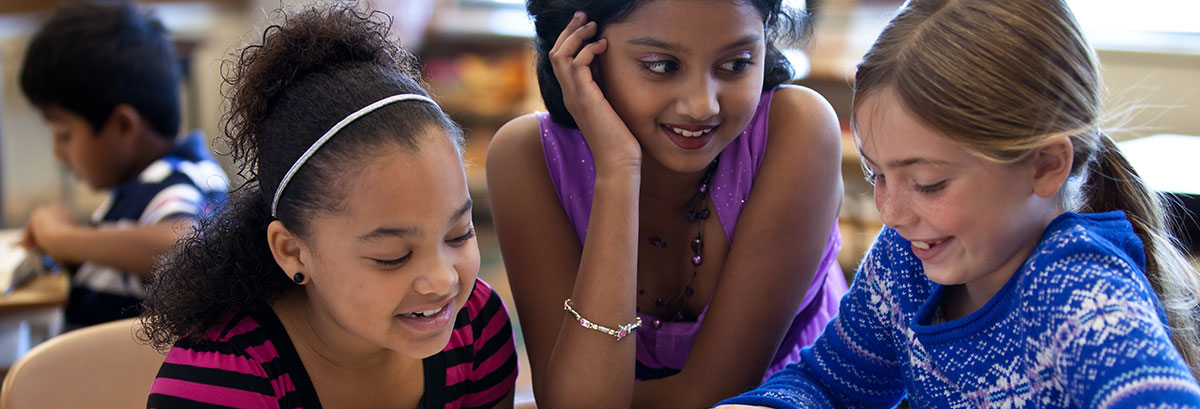In February 2018, I attended a conference session hosted by Will Richardson. During this session, Will suggested that when one knows what’s right, they have a “moral imperative” to reconfigure systems to bring that knowledge to fruition.
This notion of the moral imperative resonated with me then and still resonates with me now — when we know what is right, it is our job to act. After these past eight months, I would add that it is also a moral imperative to not squander opportunity when it presents itself.

For years, education reformers have asked what it would take to catalyze a reimagining of the industrial model of schooling — the division of space and time, the splintering of knowledge into subjects, and the belief that learning must take place in a school building. It would seem the answer lies in a global pandemic. Suddenly, we have all found that this profession we’ve known so intimately for decades has begun to evolve at a rapid pace.
The realities of distance and hybrid learning have softened the ground for change. This experience has compelled some very practical updates to our teaching toolkits, such as a newfound adeptness with technology and a greater investment in the school-home partnership. It has also compelled us to take new risks, both within and outside of our organizations. At St. Francis, for instance, these changes have included a modified distance learning schedule, extended advisory time, a weekly wellness hour, an expanded Diversity, Equity, and Inclusion curriculum, partnerships with local universities, cross-divisional course offerings, and collaborations with out-of-state STEM nonprofits.
The question now is whether these changes will last beyond COVID. It would seem to me that there are two possible outcomes:
- Revert back to how things were pre-pandemic;
- Leverage this abnormal situation to allow for a new normal to emerge.
If the second choice existed in a silo, it’d be a no-brainer — we know how important continued experimentation, reflection, and iteration is to move education forward. Unfortunately, this choice has significant and direct implications for teachers.
So, how do we preserve the sanity and strength of our teachers, while also being sure that we don’t throw away our shot at real-time action research and reform?
According to the NAIS, heads of school have taken a number of steps to address this question, including checking in with employees, buying the staff gifts, and hosting appreciation events. We know that there’s no silver-bullet solution when it comes to answering this question, as each school and faculty will differ. Over the past two months, here are some things I’ve done to support the faculty through this period of change and challenge:

Showing Gratitude
- One way that I have shown my gratitude for the faculty is through daily handwritten letters. Each morning when I arrive to my office, I have an envelope with a faculty member’s name on it that I left for myself the evening before. This envelope rests on top of my closed work laptop. Before I open my laptop to answer emails, I write a letter of gratitude and deliver it to that teacher’s mailbox. This is a great way to start your day off on the right foot.
- Every Sunday, I write a comprehensive email to the faculty detailing the schedule for the upcoming week. In this Welcome to the Working Week email, I have a space for shout-outs called “A Couple of Kudos.” Whereas letters are more private, this is a public, division-wide way to acknowledge the good work being done in the
Middle School. - Finally, I’d advise closing your laptop and expressing your gratitude face-to-face. Instead of sending an email to express my gratitude, I’ll check a teacher’s schedule, head to their workspace when they’re available, and in just a few quick minutes take the time to say “thank you.” It’s a small thing, for sure; but, there’s a real impact when visits from the division leader aren’t done for the sake of reminders or reprimands, but for the sake of gratitude.

Schedule Changes
- Extra days off are essential this year. Whether it’s the addition of some three-day weekends or possibly a smattering of half-days, it’s important that we provide the faculty with something to work towards. One change we made at St. Francis was to extend our Thanksgiving Break from three days to an entire week.
- There are also small scheduling changes that one can make to support the faculty. At. St. Francis, teachers are moving classrooms and eating with their advisory groups. This has left the faculty with fewer impromptu, organic moments of interaction and conversation with their colleagues. It has also left them with fewer opportunities to get work done in their classroom space. One thing we’ve done to account for this is implement weekly Drop Everything and Read, Drop Everything and Play, or Study Hall periods. These periods are supervised by administrators so that the faculty can spend this time working, collaborating, or simply doing what they feel they need to do.

Help Teachers Set Boundaries
I think it has been important for us to continually give the message to the community that, even though we can be in touch 24/7, it does not mean we should be. We have told families to expect timely responses from teachers, but not instant responses. We have also been vocal with teachers about doing all they can to create a life-work balance for themselves. We’ve asked that nobody send or respond to emails between 8:30am and 5:30pm. It’s easier said than done, but we’re continually encouraging our faculty to set limits, disconnect, and recharge, with school far from their mind.


